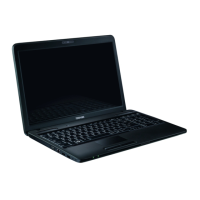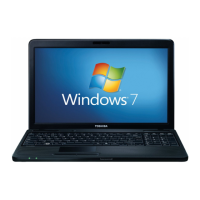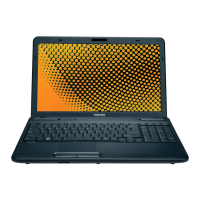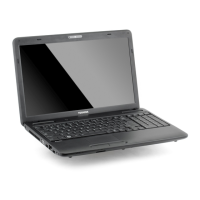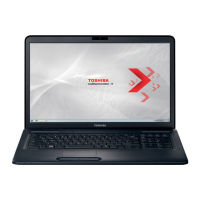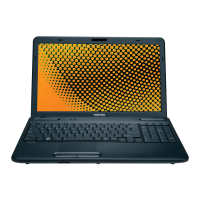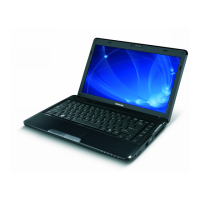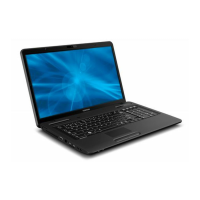Do you have a question about the Toshiba Satellite C660 and is the answer not in the manual?
Defines terms and acronyms used throughout the manual for clarity.
Explains formatting, styles, and symbols used in the manual.
Ensures optimal performance and safety by maintaining proper airflow.
Protecting equipment from environmental factors like dust and temperature.
Covers ergonomic and thermal safety guidelines to prevent injury.
Lists hardware/software items and provides basic setup steps.
Covers Shut Down, Sleep, and Hibernation modes.
Explains how to access and use system recovery tools.
Identifies parts on front, sides, underside, and open display.
Explains LED lights and keyboard indicators.
Details processor, RAM, and storage device specifications.
Covers screen resolution, graphics, LAN, Wi-Fi, and Bluetooth.
Describes pre-installed software and expansion options.
Operation of touch pad and biometric login.
Using the web camera and optical disc drives.
Audio controls, microphone settings, and network setup.
Explains typewriter, function, and hot keys.
Using the FN key for special functions and shortcuts.
Details power conditions, indicators, and battery operations.
Setting up system passwords for security.
How to access and use the BIOS configuration utility.
Settings for passwords, display, boot priority, LAN, and USB.
General approach to resolving issues and initial checks.
Common problems with computer parts like HDD, memory, and power.
Troubleshooting LAN, Wi-Fi, Bluetooth, and recovery media.
Details operating conditions and power requirements.
Interoperability, health, and compliance details.
Details safety standards and plug types for power cords.
Explains variations in CPU, Memory, Battery, HDD, etc.
List of acronyms used in the manual.
| RAM | Up to 8GB DDR3 |
|---|---|
| Storage | Up to 640GB HDD |
| Operating System | Windows 7 Home Premium |
| Battery | 6-cell Lithium-ion |
| Optical Drive | DVD Super Multi Drive |
| Wireless | 802.11b/g/n |
| LAN | 10/100 Ethernet |
| Display | 15.6-inch HD (1366x768) |
| Graphics | Intel HD Graphics |
| Ports | 2 x USB 2.0, VGA |
| Processor | Intel Core i3-380M |
| Webcam | Integrated webcam |

